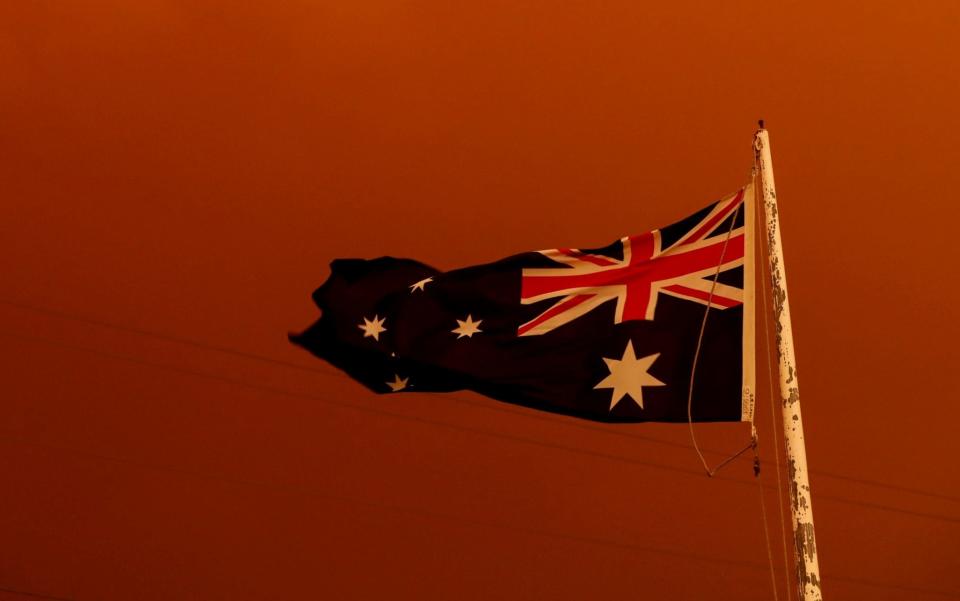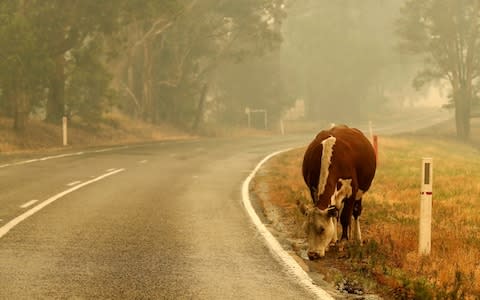Australian Open likely to go ahead despite bushfire inferno but players' safety concerns rise

Could the Australian Open be cancelled? In the context of the bushfire apocalypse sweeping the nation, the question stands a long way down the list of priorities. Yet the air quality index rose above 210 in Melbourne’s central business district on Sunday, a level defined as “very unhealthy”.
The smoke generated by the rampaging fires in East Gippsland has the potential to make outdoor exercise all but impossible. At the time of writing, Melbourne’s air was the fourth most polluted in the world, behind Canberra – which has been genuinely lethal for almost a week now – as well as Delhi and Lahore.
In the early hours of Sunday morning, Novak Djokovic highlighted the health concerns for the athletes and suggested that “Tennis Australia probably will be forced to create some rules about it ... We have a player council meeting in about a week or 10 days and we will discuss that for sure.”
Djokovic also suggested that a delay of one or two days in smoky conditions is something that, “because of some extreme weather and conditions, you just have to consider”. But it seems unlikely that the Australian Open would be halted altogether, unless the city itself turned into a disaster zone to match Victoria’s rural areas.
Melbourne Park is arguably better equipped than anywhere else in the world to handle challenging atmospheric conditions, partly because of the intense heat that has sometimes stopped play on outside courts. The organisers have equipped three stadiums – Rod Laver Arena, Margaret Court Arena and Melbourne Arena – with roofs and air-conditioning systems.

There is also a fall-back solution in the National Tennis Centre, on the south-eastern side of the site. This training base holds eight more indoor courts, equipped to a high standard, although the number of spectators who could come in would be negligible. Were Melbourne to find itself in the same situation as Canberra, essential matches could be staged in the NTC while supplementary competitions such as the juniors, the wheelchairs and the legends shifted to a different site.
In a statement, Tennis Australia chief executive Craig Tiley referred to tennis’s various fund-raising efforts, which include donations for every ace struck, and a concert at Melbourne Park on the eve of the Australian Open. As for the practical considerations of keeping tennis running around the country, he mentioned the relocation of a Challenger event from Canberra to Bendigo, which is some 400 miles further west.
And what of the possibility of smoke-related breaks in play? According to Tiley, this “is a bit like how we treat heat and rain. We have experts who analyse all available live data … and consult regularly with tournament officials and, in the case of heat and smoke, medical experts.”
Tournament organisers have thus far resisted the idea of setting an AQI figure as a cut-off point, arguing that there are too many factors at play to make such a simple judgment. This is in line with Tennis Australia's heat policy. They used to set a cut-off point, defined by a wet-bulb globe temperature reading, but last year they did away with that and introduced a more sophisticated measurement called a “heat stress scale”.
Still, however you score it, Sunday’s conditions in Melbourne were not suitable for an outdoor sporting event. The whole state of Victoria finds itself in the middle of the worst natural disaster in Australian history, and while tennis might be comparatively irrelevant, it is far from being immune.
With only a week to go before the start of qualifying, a warning was sounded by Denis Kudla, an American player who had trained in Melbourne on Friday before travelling to Bendigo. “Nothing has ever been close to postponing or cancelling a slam, so this is going to be a tough decision, naturally,” Kudla told the New York Times. “But if the smoke gets worse, I couldn’t imagine potentially playing a four-, five-hour match and not coughing like crazy post-match trying to recover and feeling awful.
“I don’t think it would be safe over a two-, three-week period,” Kudla added. “You could play, but who knows what damage we’re actually causing to ourselves? It can’t be good.”
In Brisbane, where the air quality is not an issue, British No 1 Johanna Konta made a disappointing start to her season with a 6-2, 3-6, 6-3 defeat at the hands of tricky Czech retriever Barbora Strycova – the same woman who had knocked her out of Wimbledon at the quarter-final stage last year.
Konta has lost all three of her meetings with Strycova, despite being the higher ranked player on each occasion. She dislikes the sort of tenacious opponent who can chip her aggressive drives back into court from a deep position, which is Strycova’s speciality.
More than 50 unforced errors flowed from Konta’s racket as Strycova made her play dozens of extra balls. After a disrupted off-season, which she spent battling knee tendinitis, she looked short of rhythm and match condition. But next week’s event in Adelaide will give her another chance to gather match time before the Australian Open. Assuming that it happens, that is.

 Yahoo Sport
Yahoo Sport 





































